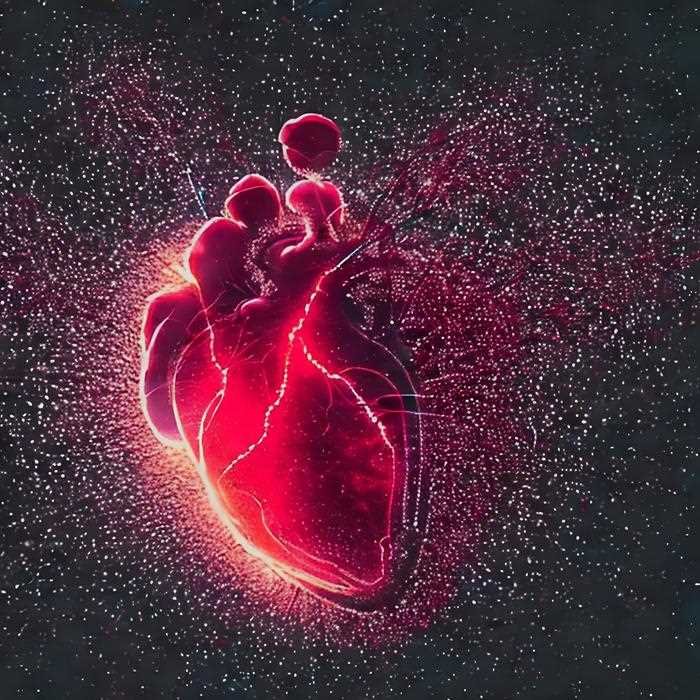A new project is using cutting-edge levitation techniques to make bioprinting heart models and other complex tissues a reality.
Dubbed PULSE, the project combines the recently developed techniques of acoustic levitation and magnetic levitation to manipulate individual components without actually touching them. It’s a process that the researchers involved hope will one day facilitate the bioprinting of organs and other human tissues in much greater detail and complexity than what is achievable with current techniques.
If perfected, the researchers also hope this type of bioprinting could even help on long-term space missions as more accurate organ models can create more accurate defenses against radiation and other stresses of space travel.
Bioprinting Isn’t Science Fiction Anymore
If you’re fighting with a Klingon, and she stabs you in the kidney with her Bat’leth, you can probably run to the local holographic doctor and have them grow a new one for you. But if you aren’t serving on a 23rd-century starship but instead are living in the early 21st century, growing replacement organs isn’t really an option. But it is getting close.
The first efforts to use a 3D printer to make living tissues or artificial tissues that can replace living ones began sometime around 2007. Since then, the technology has shown some progress, including the ability to print what researchers term an organoid, or more colloquially, an “organ on a chip.” A combination of living and synthetic tissues, these handy little devices allow drug researchers and other scientists to replace animal subjects with test options that are more closely related to the humans the drugs are ultimately intended for.
More recently, 3D bioprinting has advanced enough that bone replacements are more common, including one procedure that replaces damaged or missing bones with an artificial scaffold covered in stem cells that are absorbed and replaced by the body over time until the artificial bone is completely gone.
Now, a team of researchers from Maastricht University (UM) in the Netherlands is taking this process to a new level by tapping into the new world of levitation. And based on their goals, the idea of printing someone a whole new kidney or even a new heart doesn’t seem all that impossible or far away.
How Levitation is Changing the Bioprinting Game
“By combining magnetic and acoustic levitation into an innovative bioprinting platform, PULSE’s device should be capable of achieving unparalleled spatiotemporal control of cell deposition,” explains a press release announcing the creation of PULSE. “This new technology facilitates the precise manipulation of biological materials, enabling the creation of highly sophisticated and realistic organoids that closely mimic the complexity of the corresponding human organs.”
The Debrief has previously reported on the exciting breakthroughs taking place in both magnetic levitation and acoustic levitation, with each technology also something previously only seen in science fiction. The first uses the power of magnetic fields operating in tandem to manipulate small objects without actually touching them, while the second technique essentially accomplishes the same feat using acoustic waves.
Both process have their strengths and weaknesses, but by employing them together, the PULSE team is hoping to leverage their collective strengths.
Somewhat serendipitous given the sci-fi origins of printed organs, the researchers behind the new project say that their primary goal is using magnetic and acoustic levitation to aid in the development of defenses against radiation and other stresses that our fragile bodies will inevitably encounter as humans venture further into the cosmos.
“The ambitious goals of the PULSE project are as much related to space research as they are to healthcare on Earth,” explained Lorenzo Moroni, project coordinator and Professor of Biofabrication for Regenerative Medicine at the University of Maastricht. “Bioprinted organoids that closely replicate the complexity of human organs have the potential to reduce the reliance on animal experimentation and provide a more accurate and efficient platform to study disease mechanisms and evaluate drug responses.”
At the top of that list is the creation of in vitro 3D human heart models. Such models will allow researchers to test the effects of interstellar radiation and possible defenses needed to protect the human cardiovascular system.
“These advanced heart models will provide invaluable insights into cardiac physiology and pathology, facilitating the development of preventive and therapeutic solutions for astronauts embarking on long-term space missions and cancer patients undergoing radiation therapy,” they explain.
Now About that Klingon…
With a fresh award of nearly four million Euros from the European Innovation Council’s Pathfinder Open and a five-year project timeline, the UM team says they are ready to get to work using both levitation techniques to begin bioprinting their first human organoids. Still, they are admittedly still a long way from being able to completely reproduce an actual human organ.
So, while The Debrief has highlighted some Star Trek Technologies that are indeed inching closer to reality, for the time being at least, if you do get into a disagreement with a Klingon, it is probably better to apologize and then make a run for your nearest transporter.
Christopher Plain is a Science Fiction and Fantasy novelist and Head Science Writer at The Debrief. Follow and connect with him on X, learn about his books at plainfiction.com, or email him directly at christopher@thedebrief.org.

